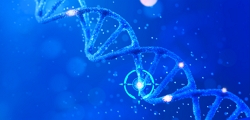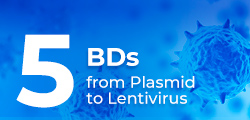-
REAGENT SERVICES
Hot!
-
Most Popular Services
-
Molecular Biology
-
Recombinant Antibody/Protein
-
Reagent Antibody
-
CRISPR Gene Editing
-
DNA Mutant Library
-
IVT RNA and LNP Formulations
-
Oligo Synthesis
-
Peptides
-
Cell Engineering
-
- Gene Synthesis FLASH Gene
- GenBrick™ Up to 200kb
- Gene Fragments Up to 3kb now
- Plasmid DNA Preparation Upgraded
- Cloning and Subcloning
- ORF cDNA Clones
- mRNA Plasmid Solutions New!
- Cell free mRNA Template New!
- AAV Plasmid Solutions New!
- Mutagenesis
- GenCircle™ Double-Stranded DNA New!
- GenSmart™ Online Tools
-
-
PRODUCTS
-
Most Popular Reagents
-
 Instruments
Instruments
-
Antibodies
-
ELISA Kits
-
Protein Electrophoresis and Blotting
-
Protein and Antibody Purification
-
Recombinant Proteins
-
Molecular Biology
-
Stable Cell Lines
-
Cell Isolation and Activation
-
 IVD Raw Materials
IVD Raw Materials
-
 Therapy Applications
Therapy Applications
-
Resources
-
- All Instruments
- Automated Protein and Antibody Purification SystemNew!
- Automated Plasmid MaxiprepHot!
- Automated Plasmid/Protein/Antibody Mini-scale Purification
- eBlot™ Protein Transfer System
- eStain™ Protein Staining System
- eZwest™ Lite Automated Western Blotting Device
- CytoSinct™ 1000 Cell Isolation Instrument
-
- Pharmacokinetics and Immunogenicity ELISA Kits
- Viral Titration QC ELISA Kits
- -- Lentivirus Titer p24 ELISA KitHot!
- -- MuLV Titer p30 ELISA KitNew!
- -- AAV2 and AAVX Titer Capsid ELISA Kits
- Residual Detection ELISA Kits
- -- T7 RNA Polymerase ELISA KitNew!
- -- BSA ELISA Kit, 2G
- -- Cas9 ELISA KitHot!
- -- Protein A ELISA KitHot!
- -- His tagged protein detection & purification
- dsRNA ELISA Kit
- Endonuclease ELISA Kit
- COVID-19 Detection cPass™ Technology Kits
-
- Automated Maxi-Plasmid PurificationHot!
- Automated Mini-Plasmid PurificationNew!
- PCR Reagents
- S.marcescens Nuclease Benz-Neburase™
- DNA Assembly GenBuilder™
- Cas9 / Cas12a / Cas13a Nucleases
- Base and Prime Editing Nucleases
- GMP Cas9 Nucleases
- CRISPR sgRNA Synthesis
- HDR Knock-in Template
- CRISPR Gene Editing Kits and Antibodies
-
![AmMag™ Quatro Automated Plasmid Purification]() AmMag™ Quatro automated plasmid purification
AmMag™ Quatro automated plasmid purification
-
![Anti-Camelid VHH]() MonoRab™ Anti-VHH Antibodies
MonoRab™ Anti-VHH Antibodies
-
![ELISA Kits]() ELISA Kits
ELISA Kits
-
![Precast Gels]() SurePAGE™ Precast Gels
SurePAGE™ Precast Gels
-
![Quatro ProAb Automated Protein and Antibody Purification System]() AmMag™ Quatro ProAb Automated Protein and Antibody Purification System
AmMag™ Quatro ProAb Automated Protein and Antibody Purification System
-
![Target Proteins]() Target Proteins
Target Proteins
-
![AmMag™ Quatro Automated Plasmid Purification]() AmMag™ Quatro automated plasmid purification
AmMag™ Quatro automated plasmid purification
-
![Stable Cell Lines]() Stable Cell Lines
Stable Cell Lines
-
![Cell Isolation and Activation]() Cell Isolation and Activation
Cell Isolation and Activation
-
 IVD Raw Materials
IVD Raw Materials
-
![Quick
Order]() Quick Order
Quick Order
-
![Quick
Order]() Quick Order
Quick Order
- APPLICATIONS
- RESOURCES
- ABOUT US
- SIGN IN My Account SIGN OUT
- REGISTER

![Molecular Biology Webinars Molecular Biology Webinars]()
Molecular Biology Webinars
Resources » Technical Resource Centers » Gene Technical Resources » Molecular Biology Webinars
These molecular biology webinars highlight strategies, techniques, and services that can streamline your research and help you avoid common pitfalls in your experimental designs.
Optimizing soluble protein expression: codon optimization, RBS design, and expression vector design
Do you wish there were an easy way to optimize protein expression? This webinar will introduce you to three powerful strategies that can make your research more efficient: codon optimization, ribosome binding site design, and expression vector selection. We will describe the principles underlying these strategies, review case studies showing how big an impact they can have, and walk through how easy it is to use GenScript's free computational tools and best-in-class gene synthesis and cloning services to get optimized expression constructs.

Originally aired November 11, 2015
Codon optimization: Why & how to design DNA sequences for optimal soluble protein expression
Have you struggled with low protein expression levels in your experiments? This webinar will explain the principles of codon optimization and explore case studies showing how it improves protein expression up to 100-fold. Research has revealed dozens of DNA sequence features that influence the efficiency of each step required to achieve soluble target protein expression. We will review the critical publications that inform GenScript's patented algorithm and the data showing how our algorithm compares to our competitors. We will look at peer-reviewed papers that employed codon-optimized synthetic genes for heterologous protein expression in different host systems, including bacteria, yeast, plant, and human cells. Finally, we will see how GenScript's codon optimization can provide clever solutions to molecular biology problems in specialized applications.

Presented by: Rachel Speer, Ph.D. Originally aired October 29, 2014
Clone less, know more: efficient expression optimization of proteins and pathways using the RBS calculator
Maximizing a heterologous protein's titer can be a balancing act between under- and over-expression. Too much: the protein aggregates. Too little: scale-up is not feasible. This challenge becomes enormous when multiple proteins are involved, for example, when expressing a multi-subunit therapeutic or engineering a multi-enzyme metabolic pathway. It's costly and honestly quite boring to screen combinatorial libraries.
To solve these challenges, this webinar introduces the computational design of synthetic DNA to systematically optimize expression levels in one- or multi-protein genetic systems, while performing the fewest number of experimental measurements. We introduce the physics behind the RBS Calculator, a thermodynamic model that predicts a mRNA's translation initiation rate using only its sequence. We then show how to use the RBS Library Calculator to design small RBS libraries that search large expression spaces. Instead of screening 10^8 variants, our computational design approach requires only 10 to 100 characterized constructs. We present several case studies showing how to optimize protein titers and engineer multi-enzyme metabolic pathways.

Presented by: Prof. Howard Salis, Penn State University
Design high specificity CRISPR/Cas9 gRNAs: principles and tools
The CRISPR/Cas9 system has recently emerged as the most powerful gene editing method to study gene function. This new technology has made gene editing easy to do in any lab. To perform CRISPR/Cas9-mediated gene editing, the first step is to design guide RNA sequences for the target gene. In this webinar, we will present detailed gRNA design principles and provide step-by-step guidance on how to design high specificity gRNAs that avoid off-target effects. We will also introduce the online gRNA design tool and other resources offered by GenScript to help you start doing CRISPR-mediated gene editing with the knowledge and tools you need to be successful.

Presented by: Heidi Huang, Ph.D. Originally aired November 5, 2014
Gene variant libraries: design, construction, and research applications
Do you wish you could enhance your research by using large gene mutant libraries, but find the thought of generating them too daunting? While it can be very challenging and time-consuming to create and validate hundreds or thousands of unique variant sequences in your own lab, GenScript's expertise in gene synthesis technology makes it easy and affordable. In this webinar, we'll discuss different strategies for designing variant libraries, and we'll explore how DNA libraries are being used in peer-reviewed publications from fields including structural biology, vaccine research, synthetic biology, and antibody engineering.

Presented by: Rachel Speer, Ph.D. Originally aired May 21st and June 18th, 2014
Building a Synthetic Eukaryotic Genome: Design, Construction and Application
Are you looking for new methods to design and engineer genes, pathways and even chromosomes? Leslie Mitchell, Ph.D., one of the leading scientists working on the Synthetic Yeast genome project Sc2.0 (www.syntheticyeast.org), will present their ambitious work to build the first synthetic eukaryotic genome. Sc2.0 aims to design, construct, and replace the native 12 Mb genome of Saccharomyces cerevisiae with a fully synthetic version. Sc2.0 chromosomes are designed to encode myriad changes. First, to improve genomic stability, destabilizing elements such as transposons are removed and tRNA genes are re-located to a separate 'neochromosome'. Second, synonymously recoded sequences called PCRtags permit encryption and tracking of the synthetic DNA. Finally, to enable downstream genetic flexibility, Sc2.0 encodes an inducible evolution system called SCRaMbLE (Synthetic Chromosome Rearrangement and Modification by LoxP-mediated Evolution) that can generate combinatorial genetic diversity on command. To date, construction has begun on more than half of the 16 synthetic chromosomes by an international team of collaborators. Software and experimental infrastructure developed to facilitate Sc2.0 genome design and construction are applicable to new projects ranging from single gene/pathway design to synthesizing artificial chromosomes.

Presented by: Leslie Mitchell, Ph.D., NYU Langone Medical Center Originally aired June 25th, 2014
Expression vectors: how to choose, or customize, vectors for gene & protein expression
Do you make new DNA constructs only using the old expression vectors you're most familiar with? This webinar will help you make your experimental design more efficient and powerful by learning how to select or design an expression vector that is optimized for your experiments. We will walk through how to read a plasmid map and what key features to look for in an expression vector depending on your research goal. Using case studies from published literature, we'll discuss why and how you might want to make custom changes to elements already included in commercial available vectors (e.g. RBS or tags). Along with handy reference guides for popular vectors used in different eukaryotic and prokaryotic species, this webinar will introduce you to GenScript's gene synthesis and cloning services that can help you get expression-ready clones most efficiently to accelerate your research.

Presented by: Rachel Speer, Ph.D, Technical Writer, GenScript

-





































